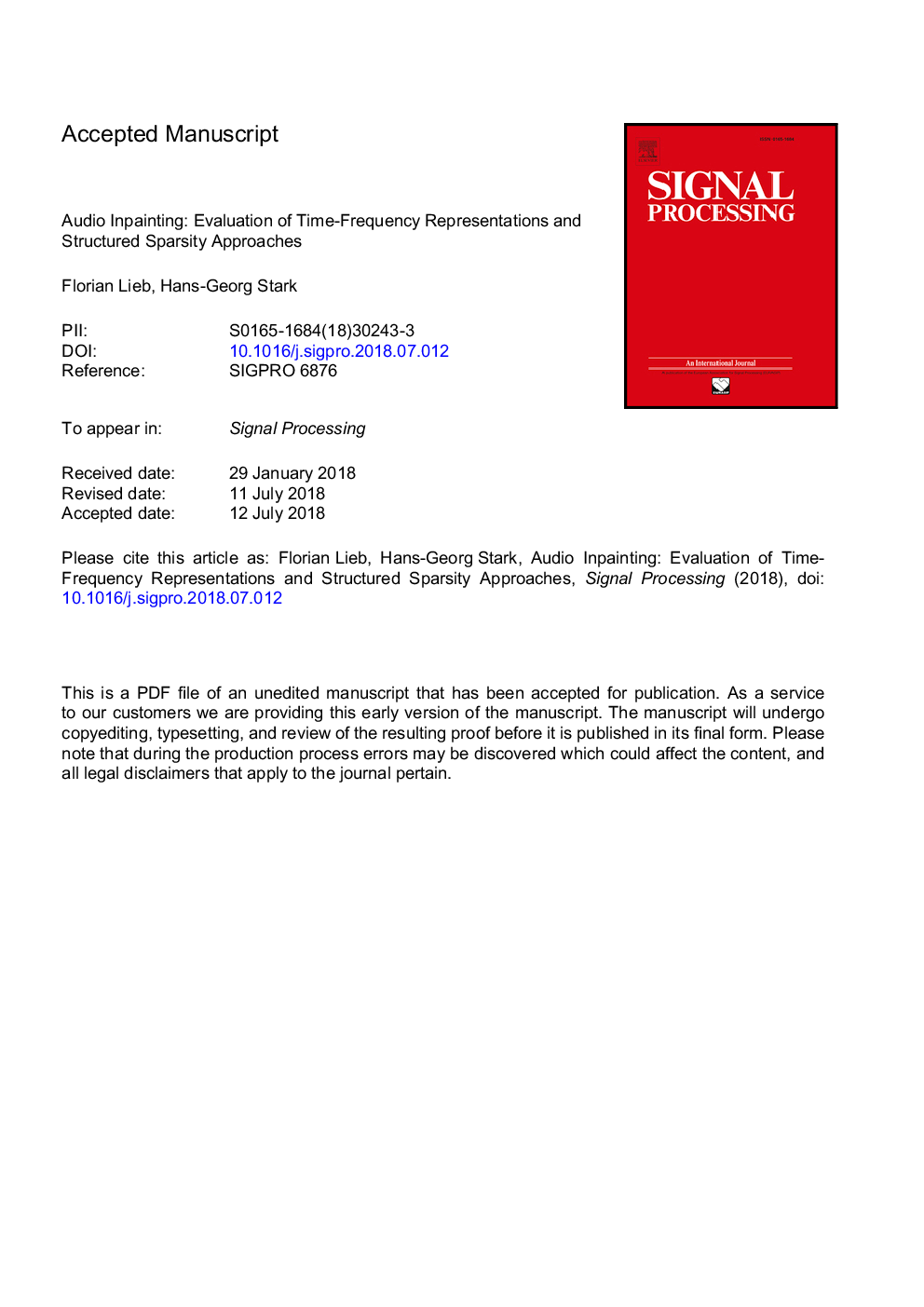| Article ID | Journal | Published Year | Pages | File Type |
|---|---|---|---|---|
| 6957025 | Signal Processing | 2018 | 34 Pages |
Abstract
Audio signals such as music are known to exhibit distinct and sparse time-frequency patterns. In particular, the short-time Fourier/Gabor transform is widely used for sparsely representing audio signals. In this contribution, such sparsity patterns are exploited to reconstruct missing samples. The quality of reconstruction is evaluated for various kinds of proximal splitting algorithms, time-frequency discretizations and sparsity enforcing constraints. Furthermore, given a time-frequency representation, we investigate the performance of synthesis vs. analysis approaches to the reconstruction problem. The equidistant discretization scheme of Gabor transforms is non-adaptive. It is plausible, that more flexible time-frequency representations like wavelets or ERBlets improve reconstruction of missing audio samples. The numerical results presented in this contribution confirm this conjecture and lead to good reconstruction results even for gaps of contiguously missing samples, whose size is notably larger than reported for inpainting experiments carried out previously.
Keywords
Related Topics
Physical Sciences and Engineering
Computer Science
Signal Processing
Authors
Florian Lieb, Hans-Georg Stark,
